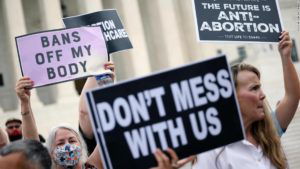
IRA Beneficiaries Must Be Properly Designated, Says Estate Planning Attorney Andrew H. Hook
Apr 5, 2016
Virginia Beach, VA (Law Firm Newswire) April 5, 2016 – A significant part of an estate plan can be the designation of a person’s IRA beneficiary. If an IRA account owner does not name a beneficiary, their heirs could be required to pay more income and estate tax than necessary following their death.
It is recommended that an account owner modify IRA beneficiary designations to suit their objectives. Usually, people name their spouses, children or grandchildren as beneficiaries. Another possibility is to designate a trust, a charity, or a group of persons, trusts or charities. Following the account owner’s death, distributions will have to be made from the IRA, and the persons or entities named as the beneficiaries can have a considerable effect on the income tax consequences.
“Individuals should make certain that they consult legal counsel for advice about naming their IRA beneficiaries in a way that avoids payment of unnecessary income and estate tax by their heirs,” states Andrew H. Hook, a prominent Virginia retirement planning attorney with Hook Law Center, with offices in Virginia Beach and northern Suffolk.
In the event the account owner’s primary beneficiary predeceases them, it is wise to also name a contingent beneficiary. If the IRA does not have a named beneficiary, the majority of plans mandate that the estate be the default beneficiary. In most cases, this creates adverse tax consequences.
IRA benefits paid to an estate are required to be distributed within five years of the account owner’s death if they die prior to the required beginning date (RBD), which is April 1 after the calendar year in which the person reaches age 70 ½, or within the remaining single-life expectancy if they die after the RBD. However, a person and some trusts can realize more beneficial tax treatment because they are usually allowed to take required minimum distributions (RMDs) from an inherited IRA during the life expectancy of the person or of the beneficiary of the trust.
In naming multiple beneficiaries, such as the IRA account owner’s children, the eldest beneficiary’s life expectancy is used to arrive at the RMD from the IRA. This is frequently referred to as the “oldest heartbeat rule.” However, this rule has an exception that states that if the IRA is apportioned into a separate account for every beneficiary, each beneficiary can apply their own life expectancy to reach the RMD. This can be accomplished by creating each separate account by September 30 of the year after the year of the account owner’s death.
Furthermore, when the account owner names their children as primary beneficiaries, and a child dies, it is most likely preferable for that child’s share to pass to the child’s children, or the account owner’s grandchildren. In order to achieve this result, use the phrase “by right of representation” or “per stirpes.” Otherwise, the account will be apportioned equally among the account owner’s other children.
If an IRA account owner designates a living trust as a primary or contingent beneficiary, it is important to make certain that the trust agreement is correctly drafted. In the event it is not, the account balance may have to be withdrawn within five years of the account owner’s death.
Prior to making any beneficiary designations, it is recommended that an IRA account owner seek legal counsel who can help with the navigation of the complex rules, and enable them to avoid unfavorable tax results.
Learn more at http://www.hooklawcenter.com/
Hook Law Center
295 Bendix Road, Suite 170
Virginia Beach, Virginia 23452-1294
Phone: 757-399-7506
Fax: 757-397-1267
SUFFOLK
5806 Harbour View Blvd.
Suite 203
Suffolk VA 23435
Phone: 757-399-7506
Fax: 757-397-1267
http://www.hooklawcenter.com/
- What you should know if you inherit your parent’s home
Many people will inherit the house in which their parents lived. Deciding what steps to take with respect to the house can cause you to confront some financial and emotional concerns, and matters can become even more complicated if you have siblings. You have the option to sell the house, move into the house or […] - How working after retirement affects Social Security
There are people who wish to work when they have reached their 60s, 70s and beyond, but are concerned that their income will adversely affect their Social Security benefits. However, there is no cause for concern because according to the Social Security Administration (SSA), you do not run the risk of losing any Social Security […] - You can insulate your retirement plan from government policy changes through tax diversification
While government policies can adversely affect your retirement, there are steps you can take to minimize the impact that they can have on your life savings. People are usually concerned about tax rates, which can directly affect your strategy for saving, and the amount of funds in your 401(k)s, IRAs and other accounts that are […] - Early retirees may need alternative withdrawal strategies
When withdrawing funds from individual retirement accounts, Roth IRAs and other such accounts, retirees may encounter inconveniences, taxes and penalties. However, proper planning may reduce or even eliminate such costs. There are techniques that retirees should use to withdraw funds from their tax-sheltered retirement accounts prior to reaching the age of 59 ½. You can […] - How to deal with an early retirement that was not planned
Although most people plan to work until they reach their full retirement age of 66, or 67 if you were born after 1942, some workers find themselves without work at an age when it is challenging to find another job, and at a time when they anticipated earning their maximum salary. Others are compelled to […]




